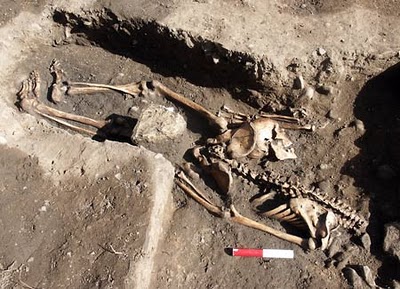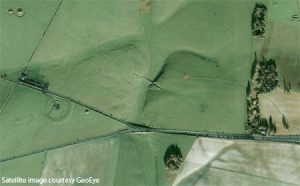 We know the Terracotta Warriors under many different names: the Terracotta Army, Qin’s Warriors, the Army of the First Emperor, The Mausoleum of Qin Shi Huang, … but what if those are almost all wrong? What if the famous stone soldiers were not Emperor Qin Shihuangs guardians for the afterlife? That’s exactly what historian and architect Chen Jingyan writes in his recently published book ‘The Truth of the Terracotta Warriors’: the mastermind behind the Terracotta Warriors is Empress Xuan, not the First Emperor.
We know the Terracotta Warriors under many different names: the Terracotta Army, Qin’s Warriors, the Army of the First Emperor, The Mausoleum of Qin Shi Huang, … but what if those are almost all wrong? What if the famous stone soldiers were not Emperor Qin Shihuangs guardians for the afterlife? That’s exactly what historian and architect Chen Jingyan writes in his recently published book ‘The Truth of the Terracotta Warriors’: the mastermind behind the Terracotta Warriors is Empress Xuan, not the First Emperor.
Yuan Zhongyi, former director of the Museum of the Terracotta Warriors comments: “The question of the real owner of the warriors has been debated since the very beginning. The conclusion that the warriors were the funeral objects of Emperor Qin was made by a group of scholars and it has been widely accepted at home and abroad.”
“It is Qin Shi Huang’s!” (<- The general opinion.)
Head of the Terracotta Warriors‘ archaeological team Liu Zhanchen says there are three strong pieces of evidence indicating that the warriors owner was Emperor Qin Shi Huang:
- The pit of the warriors is within the territory of Emperor Qins mausoleum.
- The weapons are inscribed with the words Lu Buwei (the prime minister of the Qin Dynasty).
- The architectural style and the earth analysis show that the warriors share the same characteristics as the Stone Armor Pit and Bronze Chariot and Horse Pit, which are verified parts of the mausoleum.
Liu Zhanchen adds: “According to the material collection and relics analysis, the area of the entire mausoleum is as large as 56.25 square kilometres and the pit of the warriors is within this territory. Whats more, as parts of the mausoleum, many other verified Qin Dynasty funeral object pits are also a comparative long distance away from the mausoleum. Therefore, there is nothing unusual about the location of the warrior pits.” She continues: “In the Qin Dynasty, black was a superior colour. The Qin people wore black during grand occasions, such as sacrificial ceremonies, but there was no need for people to wear black all the time.”
“It is Empress Xuan’s!” (<- According to Chen Jingyan.)
Chen Jingyan defends his theory in an interview with the Global Times:
- The distance between the Terracotta Warriors and the mausoleum of Emperor Qin Shihuang is as long as 1.5 kilometers and the distance between the centres of the two places is even further. It is strange that the funeral objects are so far away from the mausoleum.
- The hairstyle, the ancient Chinese characters found on some unearthed warriors and other evidence indicate the owner of the warriors was Empress Xuan. In Chens point of view the hairstyle of the warriors is the same as the Chu minority, the ethnicity of the Empress. Chen said if Emperor Qin had designed the army, they would be dressed in Han style.
- The clothes of the warriors were painted in many different colours, which is in stark contrast to the black-clothed soldiers of the Qin Dynasty.
- Small details such as the wheels on the chariots indicate that they are not war chariots, but ones for everyday use.
But such a massive project, by a woman? Chen explains: “Empress Xuan, the so called ‘Empress Dowager Cixi of ancient times’ was once one of the most powerful woman in Chinas history. During her reign, the Qin State was thriving and flourishing. This prosperity of the State meant that this powerful women had enough money to conduct such a huge project as the creation of the Terracotta Warriors.”
With the latest excavation of Warrior Pit No.1 – watch the video – in June, their origin and Chens conclusion has sparked further debate amongst historians. According to Liu Jiusheng, a teacher at Shannxi Normal University, taking terracotta warriors as funeral objects violates the concept that Chinese people favor a peaceful afterlife. In his opinion, the warriors and horses in Terracotta Pit No.1 do not depict armed forces, but present a real-life scene of a magnificent ceremony to celebrate the journey of the First Emperor.



